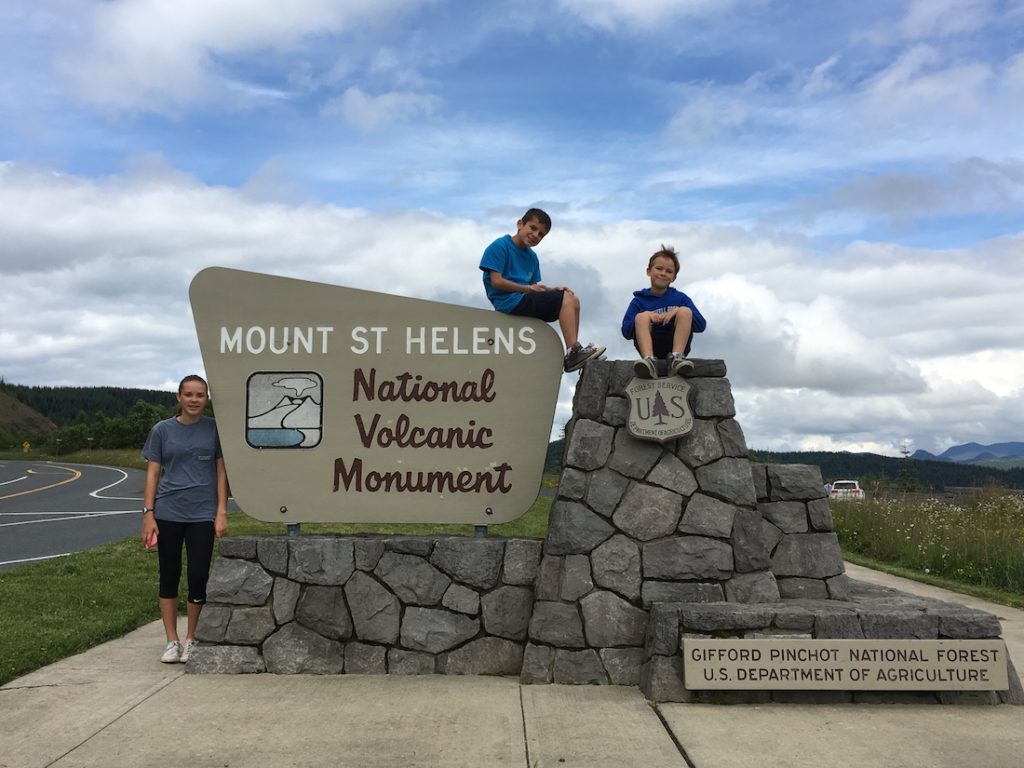
Back in the 1970s, this area was a recreational playground, similar to Mt Rainier, until one quiet Sunday morning, everything changed. In 1980, this quiet mountain getaway lost its top and made news worldwide. If your travels have you in the Pacific Northwest for the summer, add Mount St. Helens to your itinerary. For school-age kids and teens, a trip up to see Mount St. Helens is a great addition to a Washington road trip. Here are the top things to do at Mount St. Helens with kids.
Top Things to Do at Mount St. Helens with Kids
-
Stop at the Johnston Ridge Visitor Center
-
Watch the Movie
-
Attend a Ranger Program
-
Take a Short Hike
-
Learn all about Volcanoes
-
Go Camping
Mount St. Helens at a Glance
| Year Established: 1982 |
| Located: Southern Washington |
| Size: 110,000 acres |
| Top Features: Mount St. Helens Volcano |

Activities Near Mount St. Helens
Due to the recent landslide, here are some alternative locations to visit to learn more about Mt. St. Helens.
- Coldwater Lake Recreation Area offers a picnic area, an interpretive trail and a boat launch.
- Forest Learning Center at Mile marker 33 on SR 504 offers exhibits on the 1980 eruption
- Mount St. Helens Visitor Center at Silver Lake is a Washington State Park that offers exhibits on the 1980 eruption. Located 6 miles from Castle Rock along State Route 504, it’s open from 9 a.m. to 5 p.m. during the summer season.
- For more recreational activities, try the eastside or southside of Mount St. Helens, such as the viewpoints of Lava Canyon, Ape Cave or Spirit Lake.
- Eco Park Resorts offers horseback tours, the closest to Mount St. Helens, that ride through the blast zone.
What to do at Johnston Ridge Visitor Center (closed)
Note: Due to a landslide on State Highway 504, it is closed at mile marker 45. The Johnston Ridge Visitor Center is closed until further notice.
Since Mount St. Helens is an active volcano, public access is limited to its top. For the closest observation point, stop by the Johnston Ridge Visitor Center (managed by the U.S. Forest Service).
The visitor center offers an interpretive area with information about volcanoes, including gear that measures seismic activity. Visitors will also learn about the most recent Mount St. Helens volcanic activity.
Located at the end of State Highway 504. It is open seasonally from mid-May until October.
Hike the Eruption Trail
The Eruption Trail is a .5-mile trail right outside the crater. It offers views of a lava dome, the pumice plain, and the crater. During the summer, hikers will find wildflowers along the trail as well.
Attend a Ranger Program
During the summer, Park Rangers offer hourly talks on various subjects, including special programs for kids. Check-in with the information desk for the programs during your visit.
Best National Parks with Volcanoes
History of Mount St. Helens
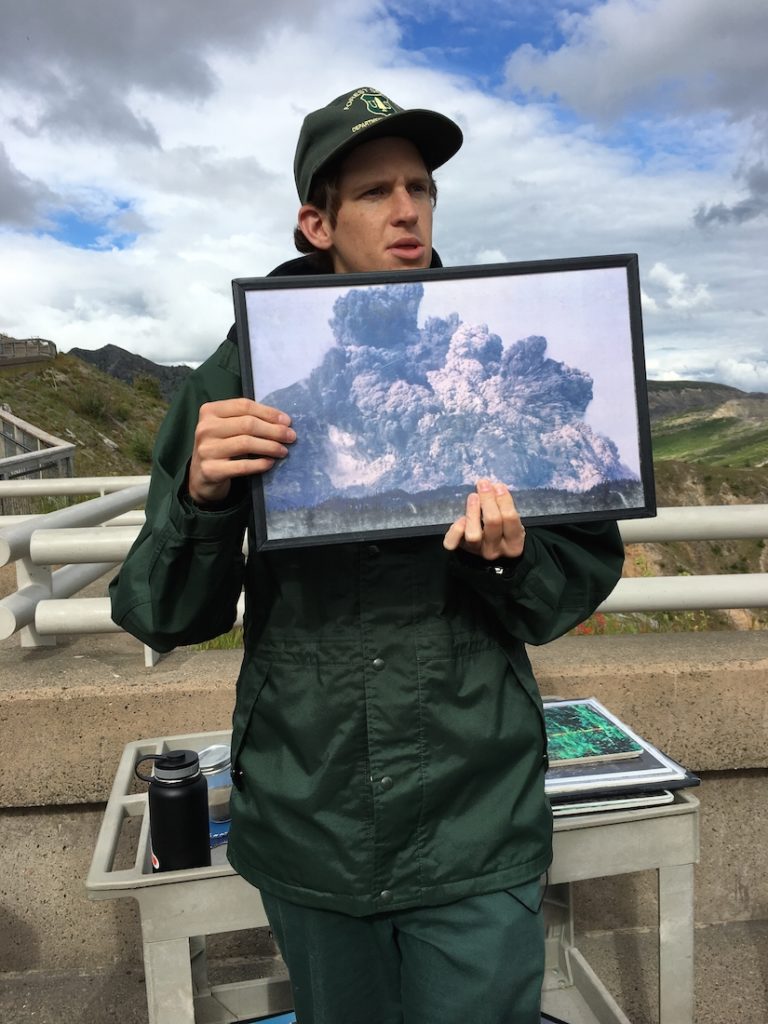
In 1792, British explorer Captain George Vancouver officially named Mount St. Helens after Baron St. Helens, an ambassador. The Cowlitz Indian Tribe and Yakama Nation’s name translates into the smoker, suggesting a history of volcanic activity.
On March 20, 1980, a 4.2-magnitude earthquake rocked Mount St. Helens and jumpstarted the volcanic activity. The next week, steam started to vent. Volcanologists flew in worldwide to watch Mount St. Helens from every vantage point. By the end of April, a bulge appeared on the north side of the mountain.
Guide to Washington National Parks
Eruption
After weeks of intense monitoring, Mount St. Helens erupted on May 18, 1980, in a fury that geologists compared to Mount Vesuvius. Another earthquake, a 5.1-magnitude, melted the snowpack into a violent mudslide and pulverized the top of the stratovolcano into a cloud of black ash.
For the next nine hours, a plume of ash soared 12 to 16 miles into the atmosphere, turning day into night. The eruption generated 3.9 million cubic yards of material, including ash, pumice, trees and boulders, that rushed 17 miles downstream.
In all, the eruption of Mount St. Helens killed 57 people. In its wrath, it destroyed 47 bridges, 15 miles of railroad, 185 miles of highway and 250 homes. It was the deadliest and most economically destructive volcanic event in U.S. history.
After the eruption, Mount St. Helens went from a 9,677-foot snow-capped peak to an 8,363-foot mountain with a one-mile-wide, horseshoe-shaped crater. Since the 1980 eruption, Mount St. Helens has continued to rumble, with intermittent episodes of venting steam and erupting lava domes. The majority of the area is closed to visitors so scientists can continue to monitor the volcanic activity.
One Day Itinerary for Olympic National Park
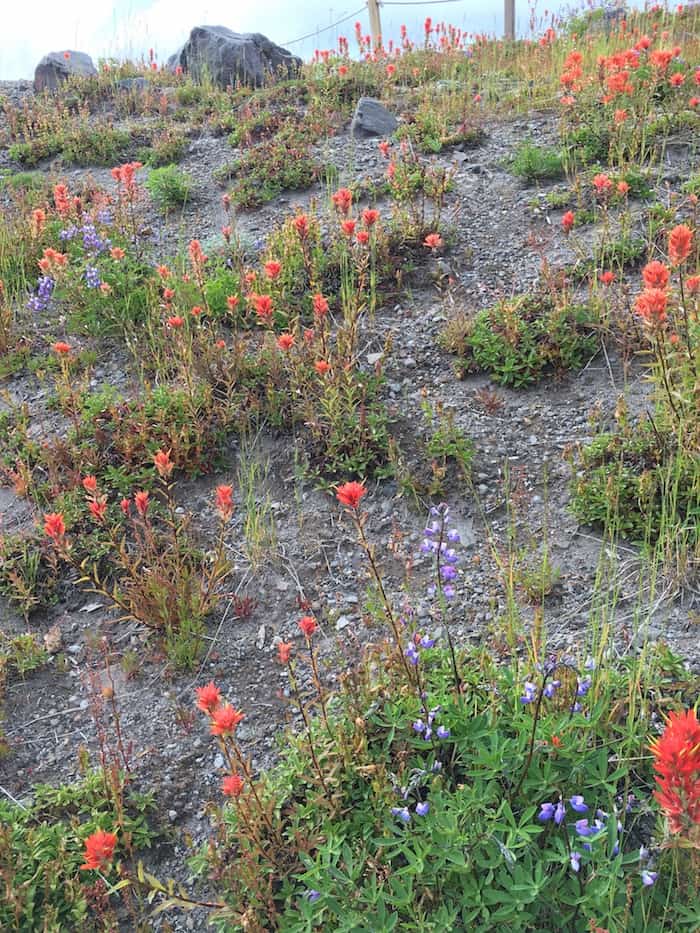
Mount St. Helens with Kids
The Johnston Ridge Observatory is a must for school-age kids. It has geologic exhibits and live seismographs. The visitor center offers two different films, perfect for school-age kids, though the movies might be intense for preschoolers and too loud for babies.
During our visit to Mount St. Helens National Volcanic Monument, my kids attended a Junior Ranger program that explained the eruption in a way kids could understand. The program took less than an hour and parents are welcome to stay or explore the monument independently.
Weekend Itinerary for Olympic National Park
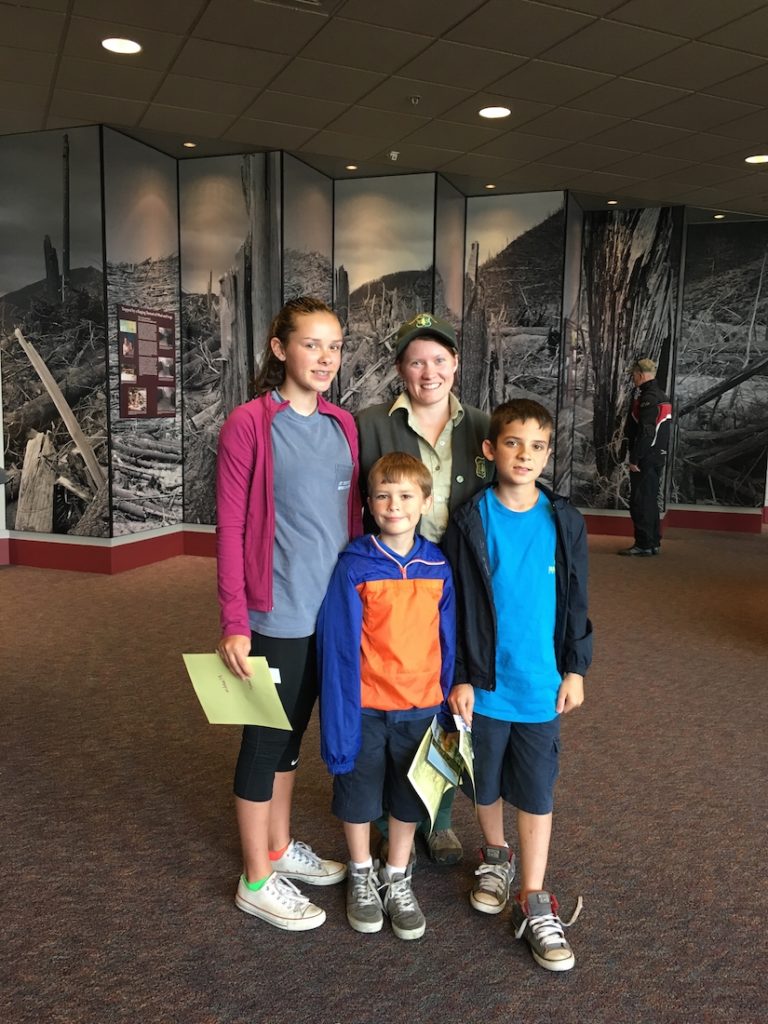
Best Alaskan Cruises for Families
Camping near Mount St. Helens
Mount St. Helens National Volcanic Monument doesn’t offer camping, so for my visit, I decided to stay as close as possible.
Eco Park Resort
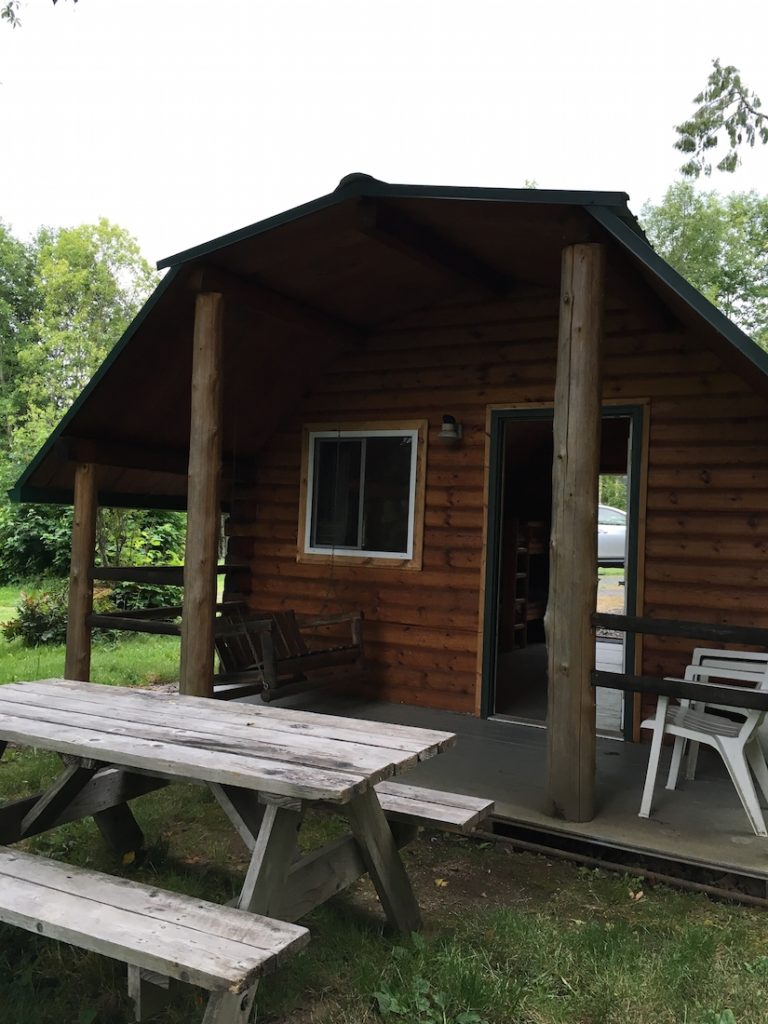
At Eco Park Resort, just 25 miles west of the Johnston Ridge Observatory, I found several cozy, off-the-grid cabins and tent and RV camping that unplugged my kids and recharged my spirit.
With a flicker of the gas-powered lights, my kids, 9, 13 and 14, and I settled in for the night under our cozy patchwork quilts. Set in a pristine landscape in the shadow of Mount St. Helens, it’s hard to believe the destruction that happened here 37 years ago.
Our Cabin at Eco Park Resort
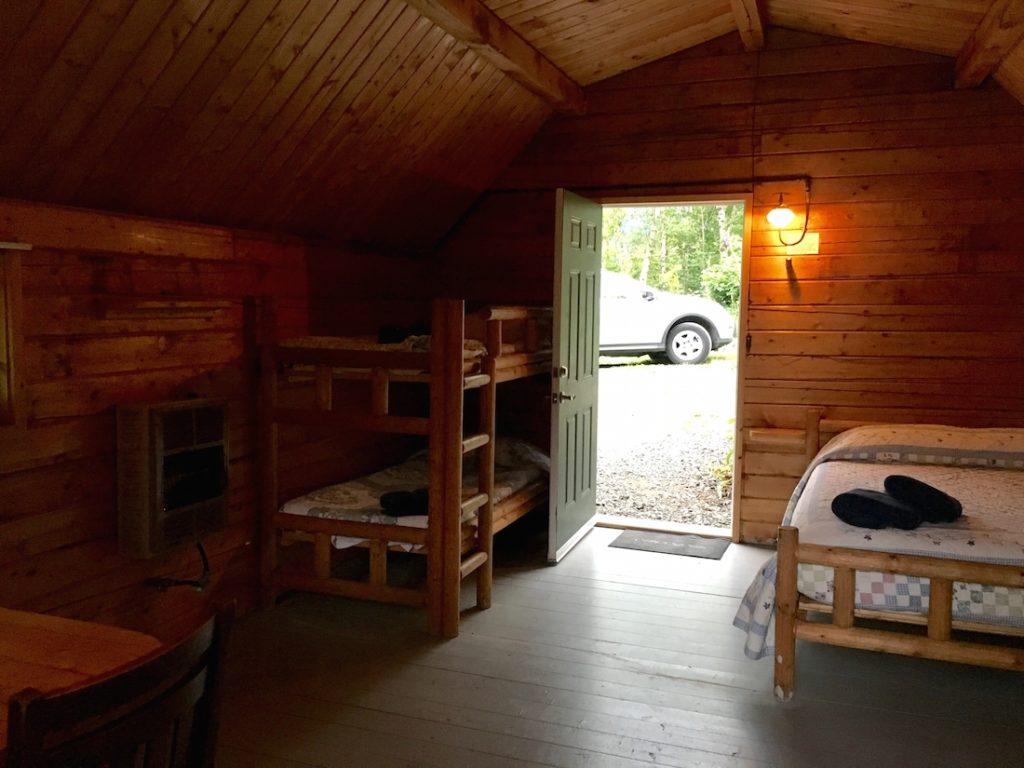
Our cabin featured a pair of bunk beds that my boys fought over (in a good way) and a full-sized bed, each dressed with a cozy quilt for the brisk Washington nights. Since the cabins lacked electricity, two gas-powered, wall-mounted lamps lighted our cabin. The flickering glow ignited my boys’ pioneering imaginations.
Inside our cabin, I found a table with four chairs, perfect for games after dinner. The long counter on one side of the cabin offered ample space for organizing camping equipment.
Outside our cabin, I made dinner on my gas camp stove while my daughter swung on the back porch swing. As we looked across the grassy meadow, we saw the first flickers of the nightly fire in Eco Park’s fire pit while my boys played in the late summer sun.
The bathrooms at Eco Park Resort are shared and free-standing. During my stay, they were very clean and offered lots of hot water.
Note: Cabins now offer solar-powered LED lights instead of gas lanterns.
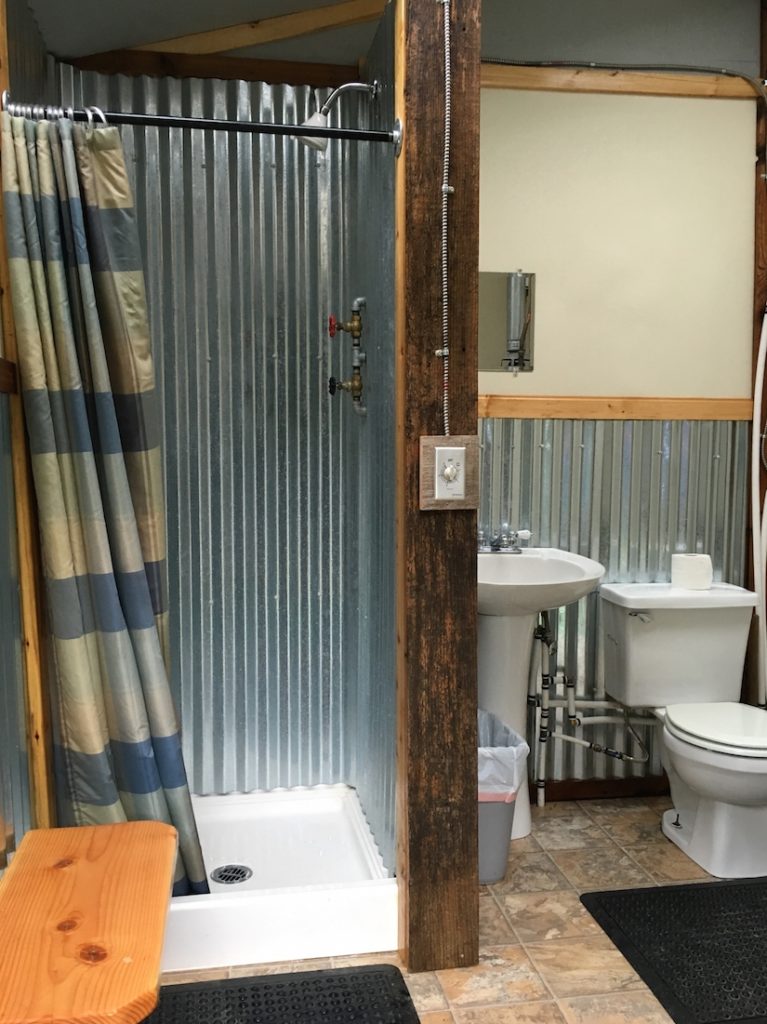
Activities at Eco Park Resort
Explore the 80-acre property along the 12 miles of hiking and biking trails. The Eco Park Resort offers a nightly campfire for relaxing or making s’mores. On the property, find the Backwoods Cafe, which is open for breakfast and dinner daily. It offers a menu with traditional breakfast items along with dinner options like steak, chicken and burgers. It also bakes up a selection of pies for dessert.
Dawn and Mark Smith, the owners of Eco Park Resort, offer their personal experiences from the day Mount St. Helens erupted. The Smith family resort, Spirit Lake Lodge, fell victim to 500 feet of ash that day. As the land recovered, the Smith family returned and opened Eco Park Resort in 1995.
Located at 14000 Spirit Lake Highway, Eco Park Resort is open from May until November and reservations are required.
Helpful Hints
- Bring a battery-operated lantern for your stay at Eco Park Resort. This will provide additional lighting in the cabin and allow you to make after-dark trips to the potty.
- Individual ground fires aren’t allowed at Eco Park Resort, though they light a fire pit that guests can enjoy. Remember the marshmallows!
- Due to its remote location, Eco Park Resort does not offer Wi-Fi, though I had reliable cell service.
- Since the cabin is off-grid, there are no electrical outlets. Remember to charge your phone before arriving.
- The cabins are heated though I didn’t turn on the heat for my stay.
- The hot water is on a timer, and the bathrooms have showers only. The doors lock, and if you have little kids, I recommend staying with them.
Guide to National Park Passes
Where’s Mount St. Helens National Volcanic Monument
The Johnston Ridge Observatory is the Mount St. Helens visitor center closest to the crater. It is 52 miles east of Castle Rock, Washington, along State Route 504 (Spirit Lake Highway). Closed in Summer 2023 due to a. landslide.
Mount St. Helens National Volcanic Monument is open seven days a week from mid-May until the end of October, from 10 a.m. until 6 p.m. You can use an America the Beautiful annual pass ($80) or purchase an adult admission for $8 per person. Kids 15 and under enter for free.
Mount St. Helens is 110 miles northeast of Portland, Oregon, and 150 miles southeast of Seattle, Washington. Both cities offer international airports. The closest towns with traveler’s services are Castle Rock or Kelso, both along Interstate 5. Public transportation is not available to the Johnston Ridge Observatory.
Columbia River Gorge National Scenic Area is just 165 miles away and offers a scenic drive. Astoria and the Lewis and Clark National and State Historical Parks are 120 miles west and offer more national park fun.
Top Places to Explore in the Columbia River Gorge National Scenic Area
Know Before You Go:
- Mount St. Helens National Volcanic Monument’s Johnston Ridge Observatory is closed from the end of October until mid-May due to snow.
- Mount St. Helens includes restricted areas for the safety and protection of the recovering landscape.
- Pets, bikes and horses are prohibited to protect the recovering landscape. Though a few bike trails are open.
- Camping is prohibited at the Mount St. Helens National Volcanic Monument.
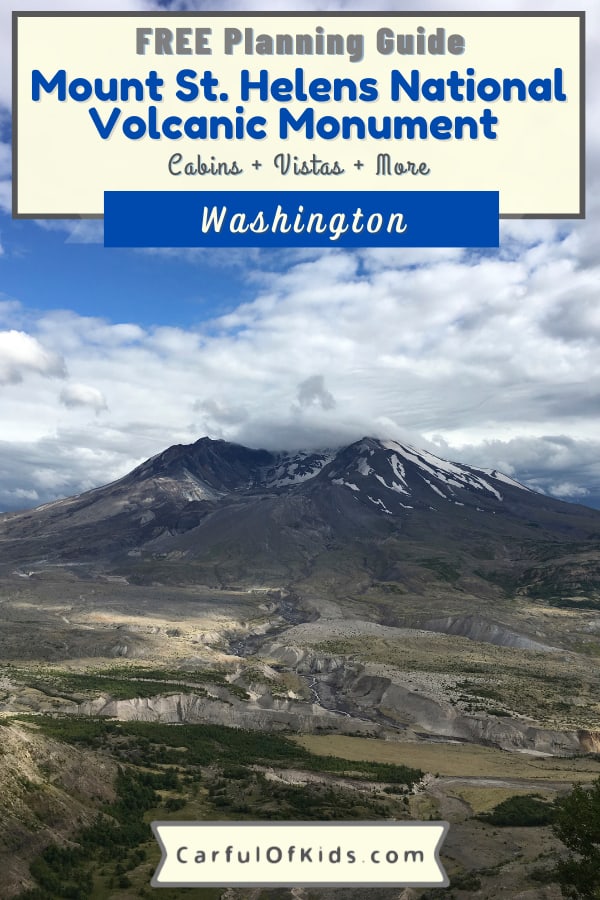


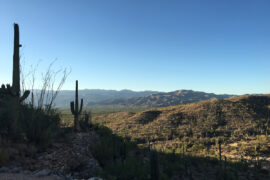
Comments are closed.